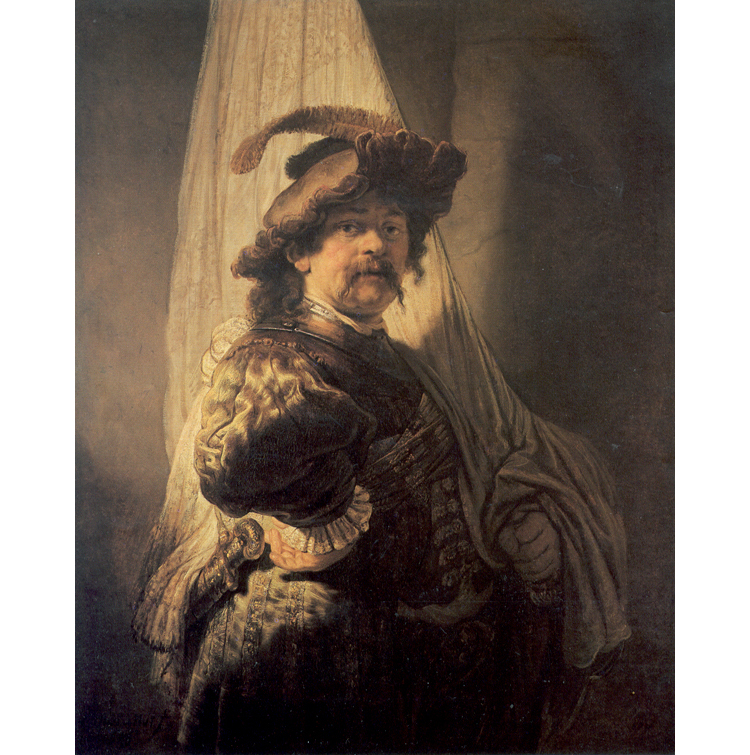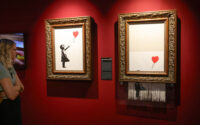Fine Arts Museums of San Francisco to Receive Significant Gift of 19th- and 20th-Century American Art
Local philanthropists and collectors Bernard A. and Barbro Osher have made a promised gift of 61 important works from their holdings of 19th- and 20th-century American art to the Fine Arts Museums of San Francisco, which includes the de Young and Legion of Honor. The de Young will host an exhibition of the gift, accompanied by a catalogue, in summer 2024.
Consisting of 50 paintings, nine works on paper, and two sculptures, the donation represents the art of 39 artists. Among those included are well-known American artists like Georgia O’Keeffe, Winslow Homer, John Singer Sargent, Charles Sheeler, and Alexander Calder. They figure alongside lesser-known ones like Boston School painter William McGregor Paxton, the influential artist-teacher Frank Vincent DuMond, and the American Impressionists Edward Henry Potthast, Frederick Carl Frieseke, and Richard Edward Miller. Those in the latter group will see their work enter into the Fine Arts Museums’ collection for the first time.
“We are delighted that these works that we have relished collecting and displaying in our home will now be appreciated by visitors to the Fine Arts Museums of San Francisco,” the Oshers said in a joint statement. “As the largest public arts institution in our city, with the finest survey collection of American art, it is fitting that these artworks will join the collection here.”
The Oshers have been long-time supporters of the Fine Arts Museums, having donated funds to the construction of the de Young’s Herzog & de Meuron–building, which opened in 2005. This led to a wing and the museum’s sculpture garden being named in their honor. Bernard Osher is also a past board president of the Fine Arts Museums Foundation.
In a statement about the Osher’s gift, Thomas P. Campbell, the Fine Arts Museums’s director and CEO, said, “Their generous donation of more than 60 works of such expansive historic scope is one of the most transformative contributions in the Museums’ history. The Oshers have enriched the Museums’ representation of American art—long considered to be one of the greatest survey collections in the United States—with a gift reflective of a dynamic period when the United States ascended to global prominence both culturally and artistically.”
Below, a look at highlights from the gift, with comments from Lauren Palmor, associate curator of American art at the Fine Arts Museums, drawn from the forthcoming catalogue.
-
Georgia O’Keeffe, Front of Ranchos Church, 1930

Image Credit: Photo Randy Dodson/Courtesy The Fine Arts of San Francisco During the 1920s, Georgia O’Keeffe established herself as a leading American modernist with her quasi-abstract close-ups of flowers. When she made her first trip in 1929 to New Mexico, where she would soon permanently relocate, it proved to be a turning point, as she would soon begin depicting her Southwestern desert environs in her signature style. Completed the following year, this work is part of a suite of around eight paintings of the Catholic San Francisco de Asís Mission Church in Taos, often called Ranchos Church. The painting “offers a rare view of the horizontal sweep of the façade of this significant New Mexico landmark,” Palmor writes.
-
Winslow Homer, The Angler (Casting in the Falls), ca. 1874

Image Credit: Photo Randy Dodson/Courtesy The Fine Arts of San Francisco One of the most iconic American painters of the late 19th century, Winslow Homer here shows a man fly fishing in the Adirondacks in Upstate New York in this canvas from the 1870s. As he did in works like his famed 1865 painting The Veteran in a New Field (now owned by the Metropolitan Museum of Art in New York), Homer applies the same “painstaking attention to detail” to even the most minute of passages in this work, from the fisherman’s rod to “the gaping tug of the buttons on his jacket as he bends his casting arm backward,” Palmor writes.
-
John Singer Sargent, Stringing Onions, 1878

Image Credit: Photo Randy Dodson/Courtesy The Fine Arts of San Francisco A constant traveler across Europe, John Singer Sargent met the central model for this watercolor, Rosina Ferrara (1861–1934), while traveling in Capri the year of its creation. Popular among local artists as a model, Ferrara and another girl are shown during a local practice of stringing onions in preparation for them to “be hung to preserve the vegetables throughout the winter,” according to the catalogue.
-
Alexander Calder, Mobile, ca. 1948

Image Credit: Photo Randy Dodson/©2023 Calder Foundation, New York and Artists Rights Society (ARS), New York/Courtesy The Fine Arts of San Francisco One of two sculptures in the donation, this elegant Calder mobile was first owned by French experimental composer Edgard Varèse, who received it as a gift from Calder. Long recognized as one of the most important sculptors of the 20th century, Calder produced his iconic mobiles starting in 1931. He “reimagin[ed] sculpture by introducing movement to a medium that had historically been stationary and impervious to external influence,” per Palmor.
-
Charles Sheeler, Cat-walk, 1947

Image Credit: Photo Randy Dodson/Courtesy The Fine Arts of San Francisco This 1947 painting by Charles Sheeler is drawn from a mid-1940s suite of work, based on his photographs of a rubber plant in West Virginia that highlight oblique angles he observed. Less interested in their function than in their aesthetic value, Sheeler is in top form with this work.
-
William Merritt Chase, Bric-a-Brac Shop, 1883

Image Credit: Photo Randy Dodson/Courtesy The Fine Arts of San Francisco “Spanish Bric-à-Brac Shop (1883) depicts an antiques dealer who invites the viewer to enter his sumptuous, stagelike shop, with its artfully arranged ceramics, metalwork, textiles, furniture, and paintings on view,” Palmor writes. William Merritt Chase drew from his frequent visits to—and purchases from—storefronts in Madrid’s open-air flea market El Rastro.
-
Robert Frederick Blum, Venetian Gondoliers, ca. 1880–89

Image Credit: Photo Randy Dodson/Courtesy The Fine Arts of San Francisco With a thin horizon line where water and sky are almost indistinguishable, Blum’s Venetian Gondoliers appears to have been painted “as if the artist set up his canvas on the rear-facing seat of a gondola,” Palmor writes, adding that gondolas were “a common source of fascination for contemporary visitors to Venice,” where they stood in stark contrast to Europe’s increasingly industrialized environs.
-
George Wesley Bellows, In Virginia (Garden Party), 1908

Image Credit: Photo Randy Dodson/Courtesy The Fine Arts of San Francisco Painted the year he moved to Charlottesville for a teaching position at the Virginia Summer School of Art, this work by George Wesley Bellows shows the campus during a garden party, shown here “as an atmospheric, arcadian landscape—the air heavy with humidity as young men and women walk and flirt in the long grasses, shaded by trees,” Palmor writes.
-
Edward Henry Potthast, Beach at Rockaway, ca. 1910–20

Image Credit: Photo Randy Dodson/Courtesy The Fine Arts of San Francisco A frequenter of the beaches of Brooklyn, Edward Henry Potthast was one of the leading painters of the American Impressionist movement, having lived in Paris from around 1886 until his relocation to New York in 1895. The painting shows Potthast’s take on how sunlight suffuses the sky and water on a hot summer day.


